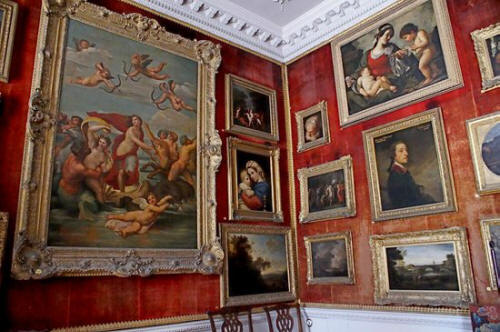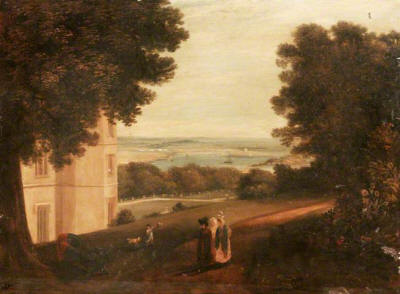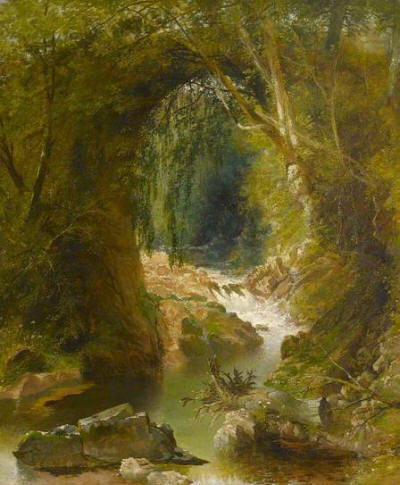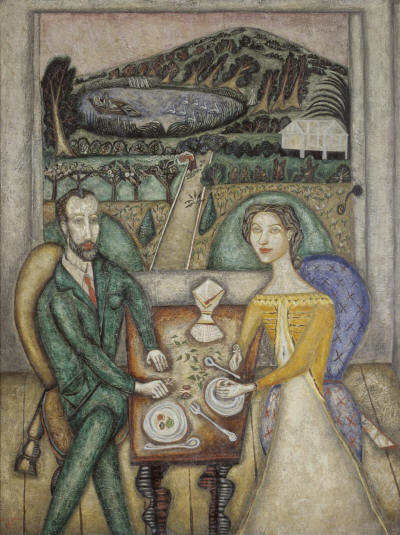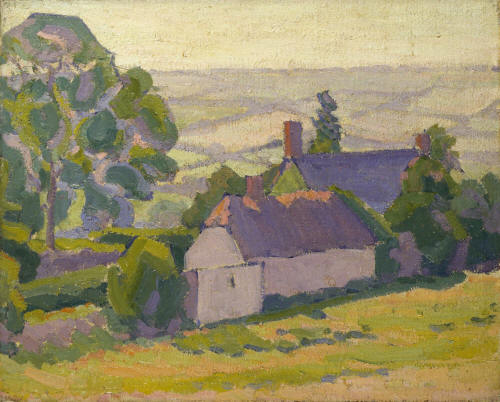|
|
| home | features | exhibitions | interviews | profiles | webprojects | archive |
|
Sam Smiles on 200 years of art in Devon Sam Smiles is Emeritus Professor of Art History at Plymouth University and the author of many books on art. e-interview Rupert White.
Norfolk in the 19c. was very strong, for
example. Also Lancashire. But Pycroft was ignorant (or, more charitably,
he didn't have the means to know that when he was writing).
Were there supportive patrons
in Devon at that time? Which artists benefitted most from them? When Exeter tried mounting exhibitions of contemporary art in the 19c. the local well-to-do tried to get in on the reduced prices set aside for artisans, which says something about their attitudes to supporting the arts! Most local artists survived by teaching and/or having an arts-related business (e.g. carving and gilding, picture restoring, picture dealing, print-making). Very few could live by sales alone.
To what extent did Joshua Reynolds’ success, (in 1768 he became first
President of the Royal Academy), reflect back on Devon?
When did Devon first become
attractive to tourists?
So Devon was already a tourist destination of sorts when J.M.W. Turner visited. Would he have travelled down by boat? What drew him to the area? Turner's habit on all his tours was to take the coach from London and then, once he got to the area, he travelled by foot, pony or horse and cart. He came to the South West first in summer 1811 on commission to produce topographical watercolours for engraving in W.B. Cooke and George Cooke's 'Picturesque Views on the Southern Coast of England', (engraving above left is of Teignmouth) travelling along the Channel coast from Dorset through Devon and Cornwall and then the north Cornish coast, north Devon and Somerset. His father was born in South Molton, and Turner called on his uncles in Exeter and Barnstaple when he was here. The engravings were published from 1814-26. He returned to Devon in 1813 and 1814, not on commission, and concentrated his activities in and around Plymouth and the Tamar valley.
Devon's popularity with artists at that time was probably a combination of things. Yes, tourism had made it increasingly familiar so chances of sales were better. But also, its geographical variety meant that there was always a kind of scenery that matched the changes in aesthetic taste - 'soft' southern or 'stern' northern coastlines, estuaries, broad rivers and rocky streambeds, woods and moorland, 'whimsical' thatch and quaint country folk etc. - so landscape artists could work here successfully. And once travel became easier more and more came.
What were the hallmarks of the more contemporary works at that time? Thinking eg of Gendall and Cook, what was it about their art that made it more contemporary?
Thus, Leakey's (1775-1865) landscape style has a mannered 18c quality with little interest in naturalism and bright enamel-like colour. His work as a genre and portrait painter is less obviously out of sync with his contemporaries. Traies (1789-1872) painted Devon landscapes that looked back to classical landscapes for their colour and tone. They would have fitted in with a conservative taste in the homes of those who bought them. Johns (1776-1858) did so too, but to a lesser extent. His later work is more colourful and he also made oil sketches from nature which shows that he could be a little bit more adventurous on occasion. His work was once confused with the early work of Turner, whom he had befriended in the 1810s when Turner was visiting Devon. But he never moved squarely into the aesthetic of London-based landscape painters working in the mid-19c and their move to a lighter-toned palette and eventually came to think of Turner's work as that of a madman. Gendall (1790-1865 - picture above left) had worked in London as a young man and returned to Exeter in 1824 full of what was current. Cook (1806-59) trained as a decorative painter but his talent was such that he rapidly developed. Membership of the Plymouth Society of Artists and Amateurs, established by Johns, helped broaden his horizons. Gendall's oils are not as arresting as his watercolurs, which show an awareness of the idea of making compositions with colour (as opposed to making tinted drawings). Cook was a watercolour specialist. He was good enough to be elected to the (national) New Society of Painters in Water Colours in 1850.
For the Elmhirsts that meant not only experimenting with the most up-to-date agricultural thinking but also attending to the intellectual and creative life of the local community. Dorothy had a strong interest in all the creative arts including visual art and also design. Some of those who came were employed as teachers, some were there to develop design and architecture projects; some were visitors. Dorothy had a big role in all of these activities but there was also a formal committee to oversee the work of the art dept. She was also an active patron, relying on an art advisor for the most part.
Who were the most important artists involved with Dartington and did
they benefit from contact with one another? Dartington was almost a British Bauhaus, as Walter Gropius acknowledged when he visited. And don't forget that the Arts Council owes its origins, and perhaps its very nature, to Dartington precisely because of this wide perspective.
I wasn't aware of Dartington's role in the formation of the Arts Council. Can you expand on this please?
The outbreak of war affected the teaching staff because some of them had been offered sanctuary there having fled Hitler's Germany. By 1941 therefore Dartington's position had to be rethought. Martin was in touch with The Council for the Encouragement of Music and the Arts (CEMA) which had proposed that the Darting-ton Arts Dept. should be its SW regional office and Imogen Holst (daughter of the composer and a musician herself) based herself there in that capacity from 1942. Martin believed in making multiple links
with organizations funded by public money - CEMA, Carnegie, Society for
Education in Art, Association of Art Teachers etc. - rather than
Dartington operating only with its own resources. In the same spirit of
collaboration, in 1941 he inaugurated four national surveys,
collectively known as the Arts Enquiry, whose purpose was to examine the
conditions currently existing in the arts and how they would be
sustained when the war was over. Although the fourth report on Theatre
wasn't completed, the three others - The Visual Arts, Music and Factual
Film - were funded by Dartington and published by the non-governmental
planning organization P.E.P (Political and Economic Planning). In fact, the first draft of the report
(submitted in 1944) included a final chapter entitled 'An Arts Council'
which stated: 'The conclusions we have reached in each section of our
report lead on to others of a general nature concerning some central
organization of the arts in this country and the form such organization
should take.' In making such recommendations the Enquiry was
technically exceeding its brief, which was to provide a factual report,
but Martin dug his heels in and the report's central recommendations
were these: the establishment of two authoritative bodies: a Design
Council, to take the place of the Council of Art and Industry; and an
Arts Council, to take over and develop the work of the Council for the
Encouragement of Music and the Arts (C.E.M.A).
Coming to the present, how has the art-world
changed in the period between say 1800 and 2000? Has it become more or
less centralised on London during that time for example? I believe that every city with a population
of 100,000 or more should have an art school as a generator of creative
activity. It is a great regret to me that Exeter lost its art school,
one of the oldest in the country, when it merged with Plymouth
Polytechnic (now the University of Plymouth) and the school was
relocated to the Plymouth campus. Plymouth already had an art school of
its own so it is doubly blessed now; but Exeter is bereft.
How has the perception of Devon and its
landscape changed in this period and what are the implications for
artists now?
3/11/15
|
|
|

